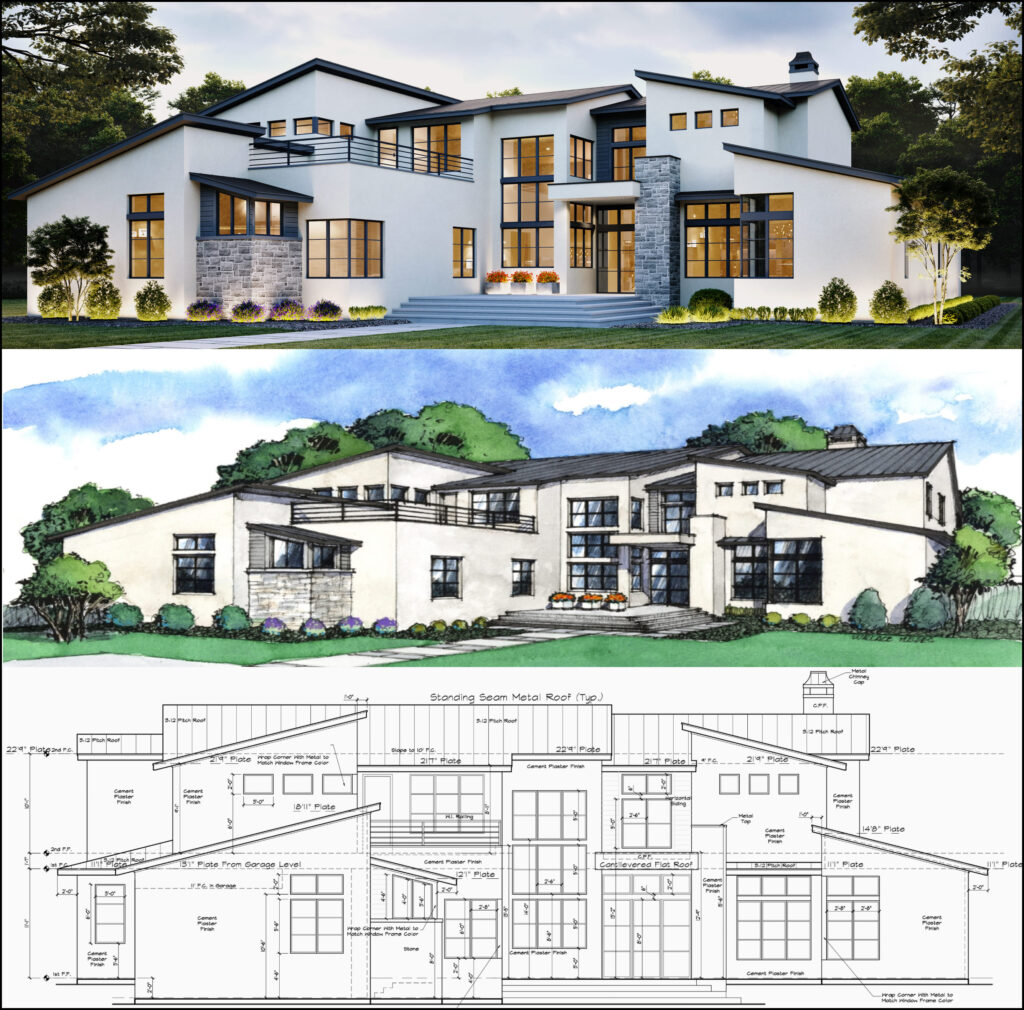Changing Areas: The Vision of CDA Architects for Modern Living
Changing Areas: The Vision of CDA Architects for Modern Living
Blog Article
Recognizing the Collaborative Process Between Designers and Engineers in Modern Construction Projects
The collaborative procedure in between engineers and designers is crucial in contemporary building jobs, as it integrates layout intent with design feasibility. Discovering these characteristics discloses understandings that might dramatically affect project end results and overall industry requirements.
The Importance of Cooperation
The collective synergy between designers and engineers is necessary for the effective awareness of any kind of construction job. This collaboration unites unique proficiency and point of views, making it possible for the integration of innovative style with sensible design options. By collaborating, architects and engineers can guarantee that a job not just fulfills visual and functional requirements but likewise follows security, sustainability, and financial restraints.
Cooperation fosters a shared vision, facilitating the alignment of goals and expectations from the outset. This alignment is crucial in resolving possible obstacles and mitigating threats that can emerge throughout the task lifecycle. A collective technique enables for the efficient allocation of sources, maximizing both time and price.
The value of partnership includes the iterative procedure of layout and building, where comments from engineers can educate building decisions, resulting in more viable and lasting layouts. On the other hand, architects can inspire designers to believe creatively concerning just how to accomplish structural honesty without endangering creative intent. Ultimately, the joint connection between engineers and engineers is not just helpful; it is fundamental to the production of high-grade, practical, and innovative constructed atmospheres that meet the requirements of society.
Interaction Methods and Devices
Effective interaction methods and tools are crucial for fostering cooperation between designers and engineers throughout the project lifecycle. Establishing clear networks of communication is vital to ensure that all group members are straightened with project objectives, timelines, and obligations. Normal meetings, both in-person and online, give opportunities for stakeholders to talk about progress, address issues, and make educated decisions.
Making use of project administration software program, such as BIM (Building Info Modeling) systems, enhances partnership by enabling real-time sharing of design adjustments and technological specifications. These tools assist in openness, permitting architects and engineers to picture adjustments and assess their influence on the general job.

Shared Objectives and Project Vision

Establishing common objectives includes open discussion and an extensive understanding of each technique's contributions. Engineers usually Full Article concentrate on style intent, spatial partnerships, and individual experience, while designers emphasize architectural integrity, systems performance, and conformity with policies (cda architects). When these viewpoints are aligned, the outcome is a natural task that complies with both innovative desires and technical expediency
In addition, a well-defined project vision promotes liability amongst group members, motivating each participant to take possession of their duty in attaining the desired outcome. Routine check-ins and collective workshops can better enhance this dedication, enabling adjustments to be made as the project develops. Eventually, a common vision not just improves synergy yet additionally boosts the top quality of the last deliverable, leading to effective task conclusion.
The Duty of Modern Technology
Leveraging modern technology has ended up being crucial in enhancing partnership in between engineers and engineers. Building Details Modeling (BIM) stands out as a pivotal technology, enabling both engineers and designers to create comprehensive 3D designs that envelop layout intent and structural honesty.
Moreover, cloud-based platforms enable over here smooth cooperation, permitting project stakeholders to access and upgrade project information from anywhere. This cultivates a society of openness and responsibility, as changes can be tracked and assessed in real-time. Furthermore, mobile applications further boost communication, supplying on-site groups with prompt accessibility to project specifications and updates.
Emerging modern technologies such as expert system and artificial intelligence are additionally starting to contribute in anticipating evaluation, aiding groups determine prospective problems before they occur. Ultimately, the role of technology in architecture-engineering cooperation not just enhances process effectiveness but also boosts technology, resulting in more successful task end results. By accepting these technological developments, architects and designers can make sure a much more cohesive and effective collective process throughout the construction lifecycle.
Study in Successful Collaborations
Many study show the extensive effect of effective collaborations in between architects and designers on job end results. One noteworthy example is the collaboration on the High Line in New York City City, where landscape architects, designers, and city coordinators worked together to change a deserted rail line right into a vibrant public park. This multidisciplinary technique not just improved the visual high quality yet likewise made certain structural safety and security and environmental sustainability.
An additional exemplary instance is the design and building of the Sydney Opera House. The collaboration in between designer JÃ ¸ rn Utzon and architectural designer Ove Arup exemplified cutting-edge problem-solving. Their partnership permitted for the renowned shell-like layout while addressing complicated design challenges, eventually resulting in an ageless building masterpiece.
The Burj Khalifa in Dubai better demonstrates the relevance of joint efforts. cda architects. The combination of design and design competence made it possible for the project team to accomplish extraordinary elevations while adhering to safety policies and aesthetic vision
These examples highlight the relevance of interaction, trust, and shared goals. In today's complicated building setting, such collaborations are important to navigating challenges and delivering jobs that satisfy both practical and visionary goals.
Verdict
To conclude, the collaboration in between engineers and designers is essential for the success of modern construction projects. Effective interaction strategies, a common task vision, and the assimilation of sophisticated innovations are important elements that promote this collaboration. By promoting a culture of accountability and leveraging tools such as Structure Details Modeling (BIM), teams can navigate project intricacies, making certain that visual, practical, and sustainability objectives are achieved. Inevitably, this harmony brings about cutting-edge and effective project outcomes.
Report this page